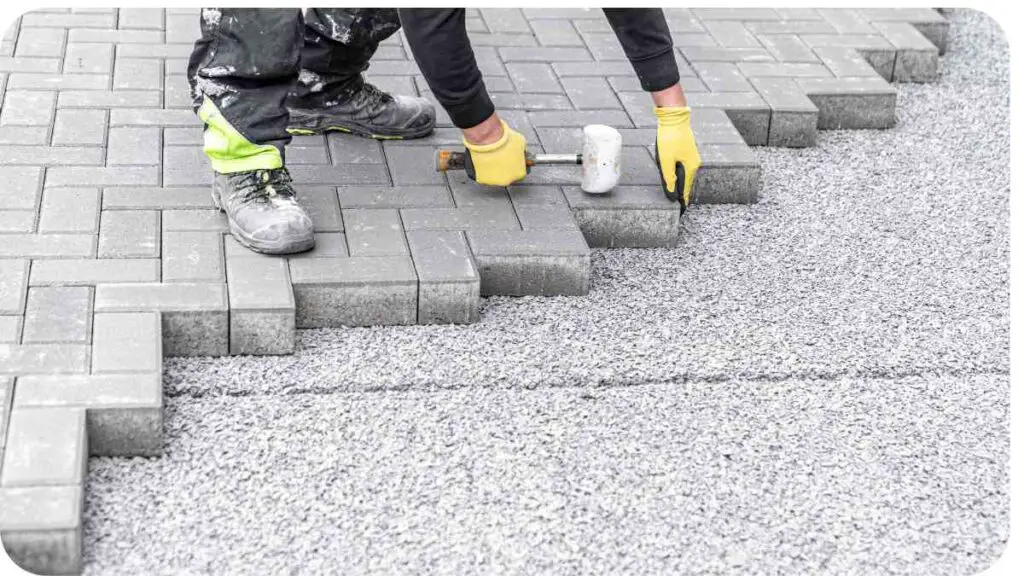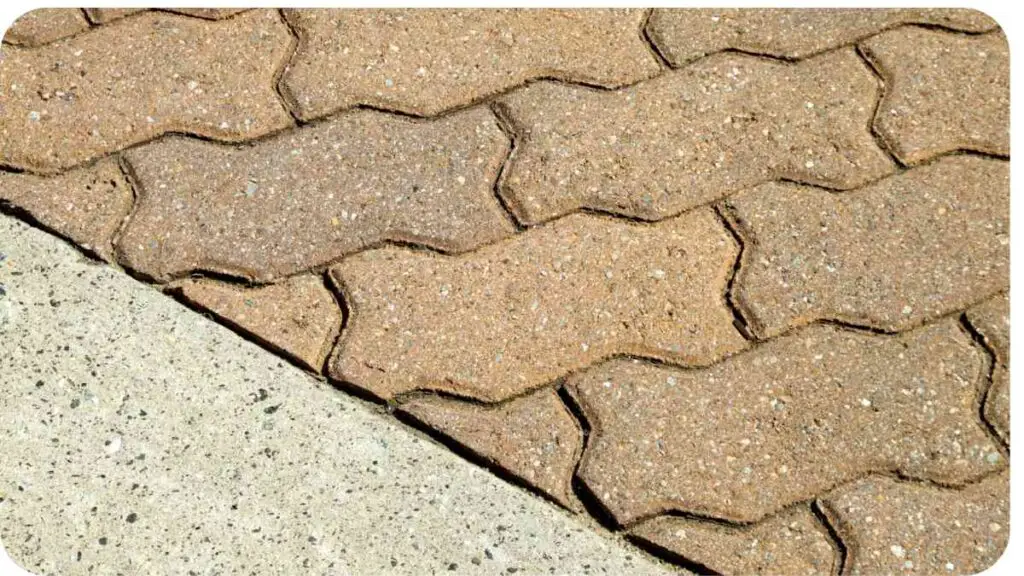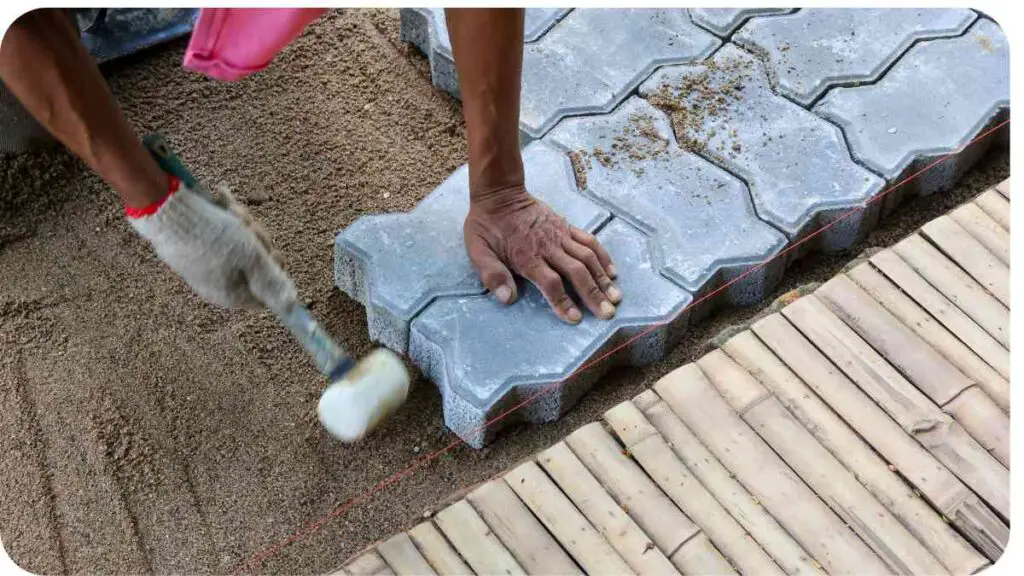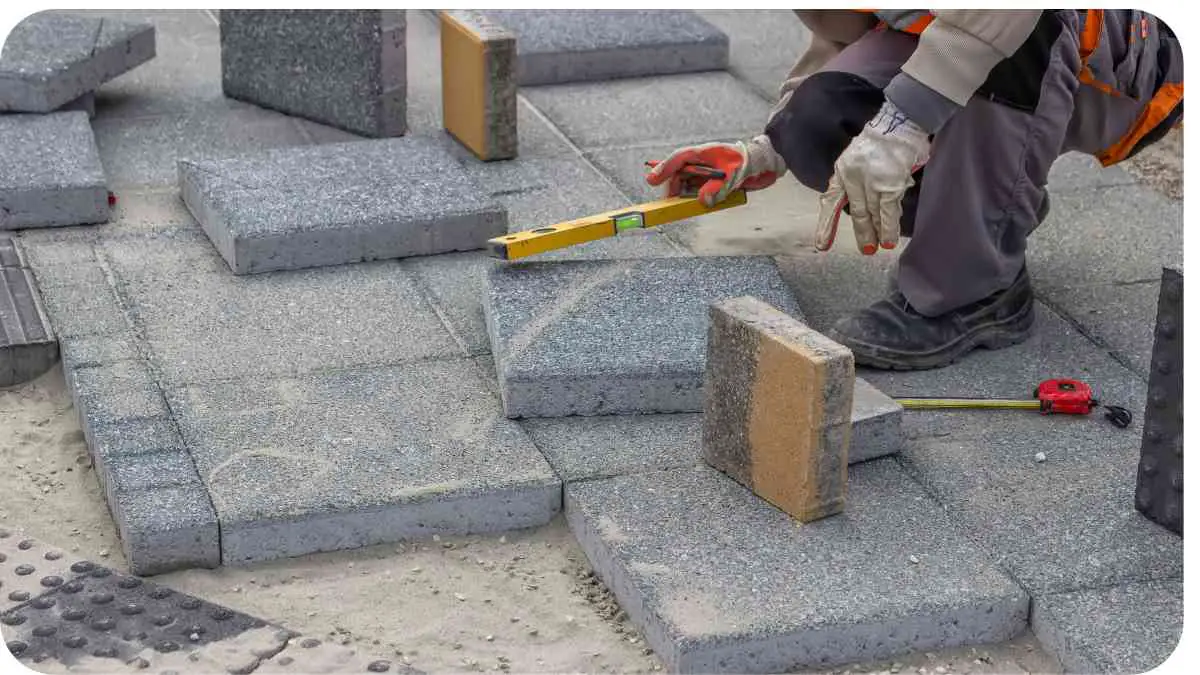Ever wondered why some concrete patios look brand new while others appear worn and cracked? The secret often lies in how well they’re sealed. Concrete sealing is the process of applying a protective layer to your patio to guard against damage from weather, water, oil, and stains. Think of it as sunscreen for your patio – it helps keep it looking great and extends its lifespan.
| Key Takeaways |
|---|
| Sealing a concrete patio protects it from stains, weather damage, and wear, extending its lifespan. |
| Different types of sealers, like acrylic, epoxy, and penetrating sealers, offer varied levels of protection. |
| Reseal your concrete patio every 2-3 years, adjusting for climate, usage, and sealer type. |
| Proper preparation, including cleaning and repairing cracks, is essential before sealing. |
| Regular maintenance, such as cleaning and avoiding harsh chemicals, helps preserve the sealer’s effectiveness. |
| DIY sealing is cost-effective, while professional sealing ensures a high-quality finish. |
| Understanding myths and common questions about concrete sealing can lead to better maintenance decisions. |
| Choose the right sealer based on your patio’s specific needs and environmental considerations. |
Importance of Sealing a Concrete Patio

Why should you bother sealing your concrete patio? For starters, sealing can prevent unsightly stains from oil, grease, and other spills. It also protects against the harsh effects of weather, reducing the risk of cracks and surface damage. In essence, sealing is a simple step that can save you a lot of time and money in the long run. Plus, it keeps your patio looking fabulous!
Enhancing your outdoor living area can be done effectively by following a DIY guide to installing freestanding patio covers and enclosures. This guide provides step-by-step instructions, making it easier to protect your patio from various weather conditions.
Understanding Concrete Sealing
Types of Concrete Sealers
There are various types of sealers available, each with its own set of benefits. Here are the most common ones:
| Type of Sealer | Description |
|---|---|
| Acrylic Sealers | Quick-drying, easy to apply, and provide a glossy finish. Great for decorative concrete. |
| Epoxy Sealers | Durable and long-lasting, offering excellent protection against stains and water. |
| Penetrating Sealers | Soak into the concrete to provide protection from within. Ideal for outdoor use. |
| Polyurethane Sealers | Highly durable and resistant to abrasion and chemicals. Suitable for high-traffic areas. |
Benefits of Sealing Your Concrete Patio
Sealing your concrete patio offers numerous benefits. It enhances the color and appearance, making the patio look more attractive. Moreover, it provides a protective barrier that repels water, reduces freeze-thaw damage, and prevents mold and mildew growth. Sealed patios are also easier to clean and maintain, giving you more time to enjoy your outdoor space.
To ensure the longevity of your patio, it’s essential to learn how to protect patio furniture in the winter. Winterizing your outdoor furniture prevents damage and keeps your patio looking its best throughout the colder months.
Factors Affecting Sealing Frequency
Climate and Weather Conditions
The weather in your area plays a significant role in determining how often you need to seal your patio. For instance, if you live in a region with harsh winters, frequent freezing and thawing can take a toll on your concrete. On the other hand, areas with intense sun exposure can cause the sealer to break down more quickly.
Patio Usage and Traffic
How often do you use your patio? If it’s a high-traffic area with lots of foot traffic, furniture movement, and outdoor activities, the sealer may wear out faster. Heavy use means you’ll need to reseal more frequently to maintain the protective barrier.
Type of Sealer Used
Not all sealers are created equal. Some last longer than others. For example, penetrating sealers often provide longer-lasting protection compared to acrylic sealers. Understanding the type of sealer you’ve used will help you determine when it’s time for a reseal.
Recommended Sealing Schedule

General Guidelines
As a general rule, it’s recommended to reseal a concrete patio every 2-3 years. However, this can vary based on the factors mentioned above. Regular inspection of your patio will help you identify the optimal resealing schedule.
Maintaining your outdoor space involves knowing how to fix outdoor patio furniture. Addressing common issues promptly ensures that your patio remains functional and attractive, complementing the sealed concrete surface.
Special Considerations for Different Climates
In colder climates with harsh winters, consider resealing every 1-2 years to protect against freeze-thaw cycles. In warmer, sunnier regions, a reseal every 2-3 years should suffice. If you’re in a rainy area, ensure your sealer is still repelling water effectively.
Signs Your Patio Needs Resealing
Wondering if it’s time to reseal? Here are some signs to look out for:
- Water no longer beads on the surface
- Visible wear and tear, such as fading or discoloration
- Increased staining from spills
- Noticeable cracks or surface damage
Preparation for Sealing
Cleaning the Concrete Patio
Before sealing, it’s crucial to clean the patio thoroughly. This ensures the sealer adheres properly and provides maximum protection. Use a pressure washer to remove dirt, grime, and any old sealer residues. For stubborn stains, a mild detergent or specialized concrete cleaner will do the trick.
Repairing Cracks and Damage
Inspect your patio for any cracks or damage. Small cracks can be filled with a concrete patching compound, while larger ones may require more extensive repairs. Addressing these issues before sealing will ensure a smooth, even finish and prevent further damage.
Understanding whether it is hard to seal a patio can help you prepare for the task ahead. Sealing your patio might seem challenging, but with the right tools and guidance, it becomes a manageable DIY project.
Choosing the Right Sealer
Water-Based vs. Solvent-Based Sealers
Both water-based and solvent-based sealers have their pros and cons. Water-based sealers are eco-friendly, have low VOCs (volatile organic compounds), and are easy to clean up. Solvent-based sealers, on the other hand, offer a longer-lasting finish and better performance in harsh conditions. Your choice will depend on your specific needs and environmental considerations.
Penetrating vs. Surface Sealers
Penetrating sealers soak into the concrete, providing protection from within. They are ideal for outdoor patios exposed to the elements. Surface sealers, on the other hand, form a protective layer on top of the concrete, offering excellent resistance to stains and abrasion. Consider your patio’s exposure and use when choosing between these options.
Step-by-Step Sealing Process
Tools and Materials Needed
Before you start, gather the following tools and materials:
- Concrete sealer
- Paint roller or sprayer
- Protective gear (gloves, goggles, mask)
- Pressure washer
- Concrete cleaner
- Patch compound for cracks
Detailed Sealing Steps
- Clean the Patio: Use a pressure washer and concrete cleaner to thoroughly clean the surface. Allow it to dry completely.
- Repair Cracks: Fill any cracks or holes with a concrete patching compound. Smooth the surface and let it dry.
- Apply the Sealer: Using a paint roller or sprayer, apply the sealer evenly across the patio. Follow the manufacturer’s instructions for coverage and drying times.
- Allow to Dry: Let the sealer dry completely before using the patio. This may take anywhere from a few hours to a full day, depending on the sealer type and weather conditions.
- Second Coat (Optional): For additional protection, apply a second coat of sealer after the first one has dried.
Implementing effective weatherproofing tips for long-lasting outdoor structures can significantly extend the life of your patio. Proper weatherproofing techniques help protect the surface from harsh elements, ensuring durability and aesthetics.
Maintaining a Sealed Concrete Patio

Regular Cleaning Tips
To keep your sealed patio in top condition, regular cleaning is essential. Sweep away debris and wash the surface with a mild detergent as needed. Avoid using harsh chemicals or power washing at high pressure, as this can damage the sealer.
Avoiding Common Mistakes
When maintaining your sealed patio, steer clear of common mistakes like using abrasive cleaners, dragging heavy furniture, or neglecting regular inspections. These can compromise the sealer and reduce its lifespan.
Cost of Sealing a Concrete Patio
DIY vs. Professional Sealing
Sealing your patio can be a DIY project or done by professionals. While DIY sealing is cost-effective, it requires time and effort. Professional sealing ensures a flawless finish but comes at a higher cost.
Cost Breakdown Table
| Option | Cost Range | Benefits |
|---|---|---|
| DIY Sealing | $50 – $150 | Cost-effective, control over the process |
| Professional Sealing | $300 – $800 | Professional finish, saves time and effort |
DIY Sealing Tips
Safety Precautions
When sealing your patio yourself, safety is paramount. Wear protective gear, including gloves, goggles, and a mask, to avoid exposure to harmful chemicals. Ensure the area is well-ventilated if you’re using solvent-based sealers.
Pro Tips for a Perfect Finish
- Apply the sealer on a dry, windless day to avoid dust and debris settling on the wet sealer.
- Use a high-quality roller or sprayer for even application.
- Follow the manufacturer’s instructions carefully for the best results.
Professional Sealing Services
How to Choose a Contractor
If you decide to go with professional sealing, choose a reputable contractor. Look for reviews, ask for references, and ensure they have experience with concrete sealing.
Questions to Ask Your Sealing Contractor
- What type of sealer do you recommend for my patio?
- How long will the sealing process take?
- Can you provide references from previous clients?
- What is your warranty or guarantee policy?
Common Myths About Concrete Sealing
Myth vs. Reality
There are several myths about concrete sealing that need debunking. For instance, some believe sealing is a one-time job, while in reality, regular resealing is necessary. Another myth is that all sealers are the same, but different types offer varying levels of protection.
FAQs About Concrete Patio Sealing
Top Frequently Asked Questions
- How long does a concrete sealer last?
- Typically, a concrete sealer lasts 2-3 years, but this can vary based on usage and weather conditions.
- Can I seal a stained concrete patio?
- Yes, sealing a stained concrete patio enhances the color and provides protection.
- Is it necessary to seal a new concrete patio?
- Yes, sealing new concrete helps prevent damage and extends its lifespan.
- What happens if I don’t reseal my patio?
- Without resealing, your patio is more susceptible to stains, cracks, and weather damage.
- Can I use a power washer on a sealed patio?
- Yes, but use it on a low setting to avoid damaging the sealer.
Conclusion
Sealing your concrete patio is essential for maintaining its appearance and durability. Understanding the types of sealers, the factors affecting sealing frequency, and the proper sealing process will help you keep your patio in excellent condition.
By taking the time to seal your concrete patio and maintain it properly, you’ll enjoy a beautiful and functional outdoor space for years to come. Whether you choose to DIY or hire a professional, the effort is well worth it. Happy sealing!
Further Reading
What You Need to Know About Sealing Concrete
Discover the essential details about concrete sealing, including the benefits, types of sealers, and the sealing process.
How Often Should I Seal My Stamped Concrete?
Learn the recommended sealing frequency for stamped concrete and the factors that influence it.
How Often Should You Reseal Your Concrete?
Get insights into the optimal resealing schedule for concrete surfaces to maintain their durability and appearance.
FAQs About Concrete Patio Sealing
How often should a concrete patio be sealed?
Typically, it’s recommended to seal a concrete patio every 2-3 years, but this can vary based on climate, usage, and the type of sealer used.
Can I seal a previously sealed concrete patio?
Yes, you can reseal a previously sealed concrete patio. Ensure the surface is clean and the old sealer is removed or compatible with the new one.
What are the signs that my concrete patio needs resealing?
Signs include water no longer beading on the surface, visible wear and tear, increased staining, and noticeable cracks or surface damage.
Is it possible to seal a concrete patio myself, or should I hire a professional?
Both options are viable. DIY sealing is cost-effective but requires time and effort. Hiring a professional ensures a flawless finish but is more expensive.
What type of sealer should I use for my concrete patio?
The choice depends on your needs. Water-based sealers are eco-friendly, while solvent-based sealers offer longer-lasting protection. Penetrating sealers are great for outdoor use, and surface sealers provide excellent stain resistance.

I am Hellen James, a professional handywoman with expertise in improving home and garden spaces by using pergolas, gazebos, and tents.

